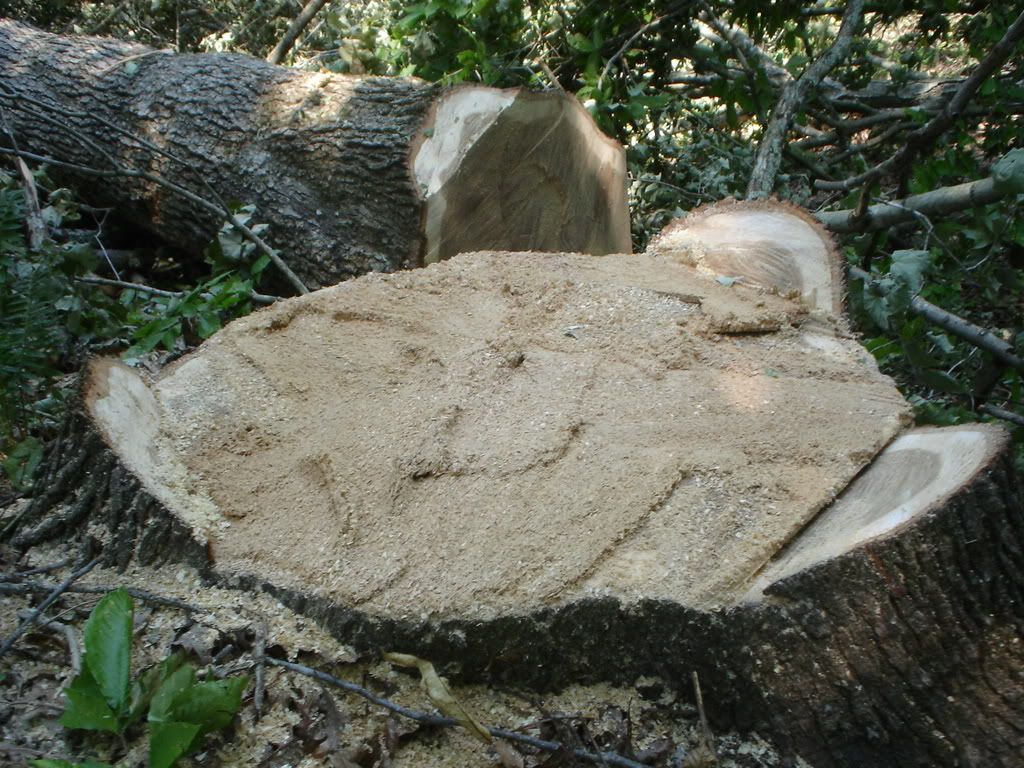Bermie
Addicted to ArboristSite
Who ever all these over paid under qualified "experts" are who are advocating bore cutting should consider the consequences of having rookies bore cutting trees.
The way to start a bore cut has been well described already.
WRAP YOUR LEFT THUMB AROUND THE HANDLE BAR. I constantly see people who should know better with their thumb above the handle bar. This could save your life. If the saw stays in your hand when it kicks back you chances of avoiding injury are much better.
My personal experience with this is a tree service company saw that had been rev rev bang the brake on so much that when it did kick back with me the inertia handle activated but the brake band broke. Fortunately my thumb was around the handle bar and the saw stayed in both hands. When my left elbow completely bent towards me, my body was pushed back and the wide open throttle saw, cut a kerf in the bill of my hard hat instead of my forehead.
After you start a bore cut and you feel the saw chattering in the cut it is kick back but it is contained inside the the wood by the wood above the bar. This is a very powerful force even though it might feel mild. I have had it break tie straps on the chain. When the chattering starts it can often be stopped by rotating the saw on its axis. Give the handle bar a shake left and right as if you where checking the play in a steering wheel.
I am 240 lbs and don't have a soft or weak spot on me, and kick back from a little saw scares the crap out of me.
Joe,
You have raised some very pertinent points Thank-you!
Having your thumb all the way around the bar is crucial...you fail your asessments here if you consistently leave your thumb on top +1
Inapproriate or overuse of the chainbrake, maddening +1
Saw 'chattering' inside the bore, the danger zone is contacting wood and trying to kick out, time to readjust the area that is cutting (mental picture) +1
Kickback is scary no matter what size you are! +1
Thank God your chain had stopped rotating when it hit your hard hat, raises a question about where you were positioned in relation to the bar???
The borecut has its place, if you are well taught in the first instance then it can be used safely and appropriately. It IS dangerous if applied or practiced incorrectly. At some time in your career, you WILL experience kickback, walking away from it depends on being prepared for it!
BTW, I don't usually like listing my qualifications but given the concern that bore cuts are being advocated by the underqualified... I am a City and Guilds NPTC approved chainsaw assessor and verifier, and Lantra Awards registered instructor. These are the UK standards for chainsaw competence.
The bore cut is taught to 'novices' for felling and crosscutting techniques AFTER they have completed their initial CS qualification in maintenance and crosscutting of timber smaller than a 16" bar. By then you know they understand reactive forces of the saw AND the timber.
Time for beer
Last edited:

























































